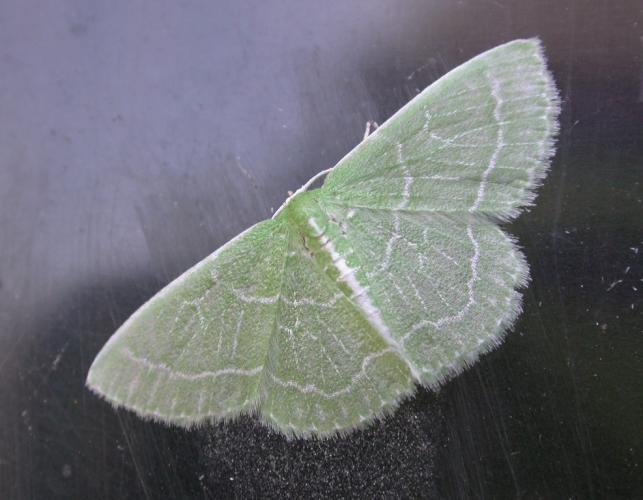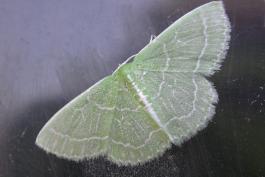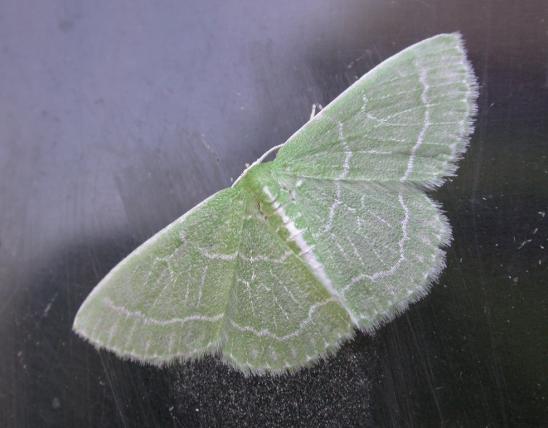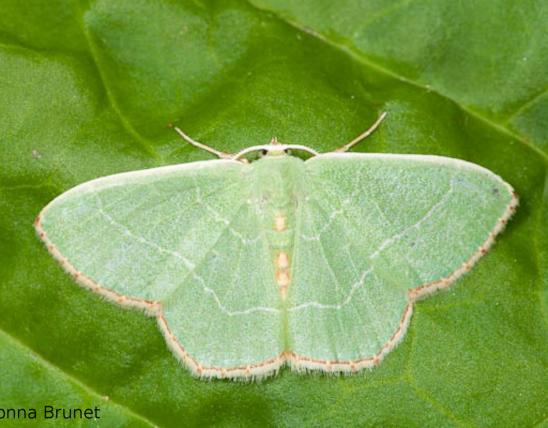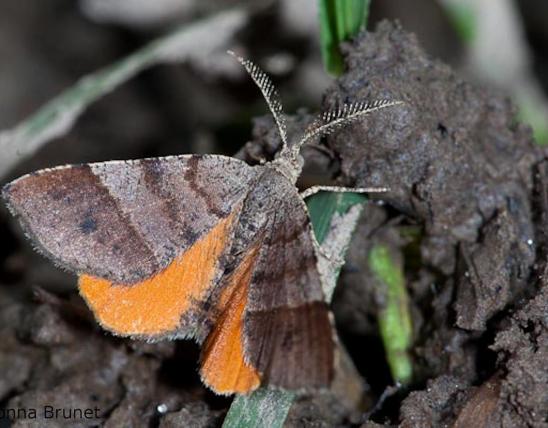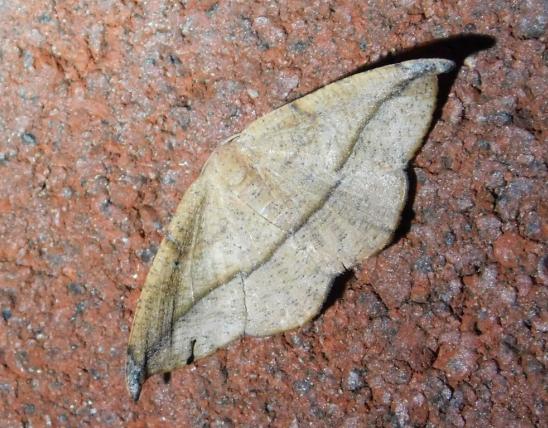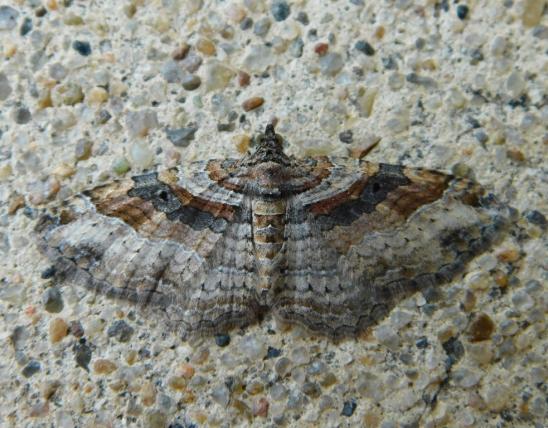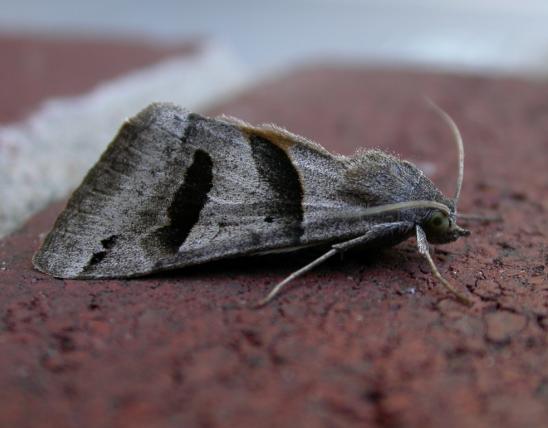
The wavy-lined emerald is one of many Missouri moths in the geometrid family. Also, it is one of many geometrid moths called emeralds.
The emeralds are a subfamily within the geometrid family, and there are dozens of species in North America. They mostly look incredibly similar, being green (sometimes tan) and typically resting with their wide wings spread out to the sides. Key identifying features for this species of emerald are the mildly wavy white lines that run across the wings; pale green fringe on the wings; and a long, thin white stripe running the whole length of the abdomen.
The caterpillar of this species is a looper (or inchworm) that decorates itself with pieces of plants, especially small clippings from flower petals. The fresh petal fragments start off looking colorful but then dry out to look like crumbs. In this way, the caterpillar either blends in with the colorful flower, or else looks like a mere chunk of debris. Either way, it is camouflaged from predators.
Learn more about this and other geometrid moths on their family page.
Similar species: In North America north of Mexico, there are 11 other species in genus Synchlora. One species is especially similar to the wavy-lined emerald: the southern emerald (S. frondaria). Its transverse lines are much more scalloped or jagged, making little points where the lines cross the wing veins; it seems to be less common in Missouri than the wavy-lined emerald and is more numerous in states in the southeastern United States.
Also in North America, realize that there are about 12 genera of moths that are called emeralds (in the subfamily Geometrinae), comprising dozens of species that mostly look remarkably similar to each other. Many species are green. Some species, however, are tan, or else have either tan or green coloration varying with the season of emergence.
Wingspan: 1/2 to 1 inch.
Statewide.
Habitat and Conservation
Usually most abundant in and near open habitats such as prairies, pastures, old fields, and roadsides.
Food
The caterpillars eat a variety of plants. They are often seen on the flowers of sunflowers, coreopsis, coneflowers, blazing stars, goldenrods, asters, black-eyed Susans, yarrows, and other members of the sunflower family, but they also occur on a wide variety of other nonwoody and woody plants, notably blackberries and others in genus Rubus.
Status
Common resident geometrid moth with two or three broods per year.
Life Cycle
There are two or three broods per year. They overwinter in the larval stage, when they are about half developed.
Human Connections
Most people really love it when they finally see one of the weird-looking camouflaged caterpillars and realize what it is. Usually, people encounter these decorated larvae when they're admiring the flower head of a sunflower. Then suddenly they notice a bizarre-looking jumble of crud start to walk around like an inchworm. If you see one decorated with freshly trimmed petal fragments, it is a special treat as they can be quite colorful (pink, purple, golden yellow). It's as if the caterpillar is dressed up like a float in the Rose Bowl Parade.
Ecosystem Connections
When an insect both eats plants and is well-camouflaged, it's a safe bet to guess it is a tasty, nutritious, in-demand food for birds and other predators that hunt by sight. The multitudes of insects, like this moth, are important foods for birds and other predators.

